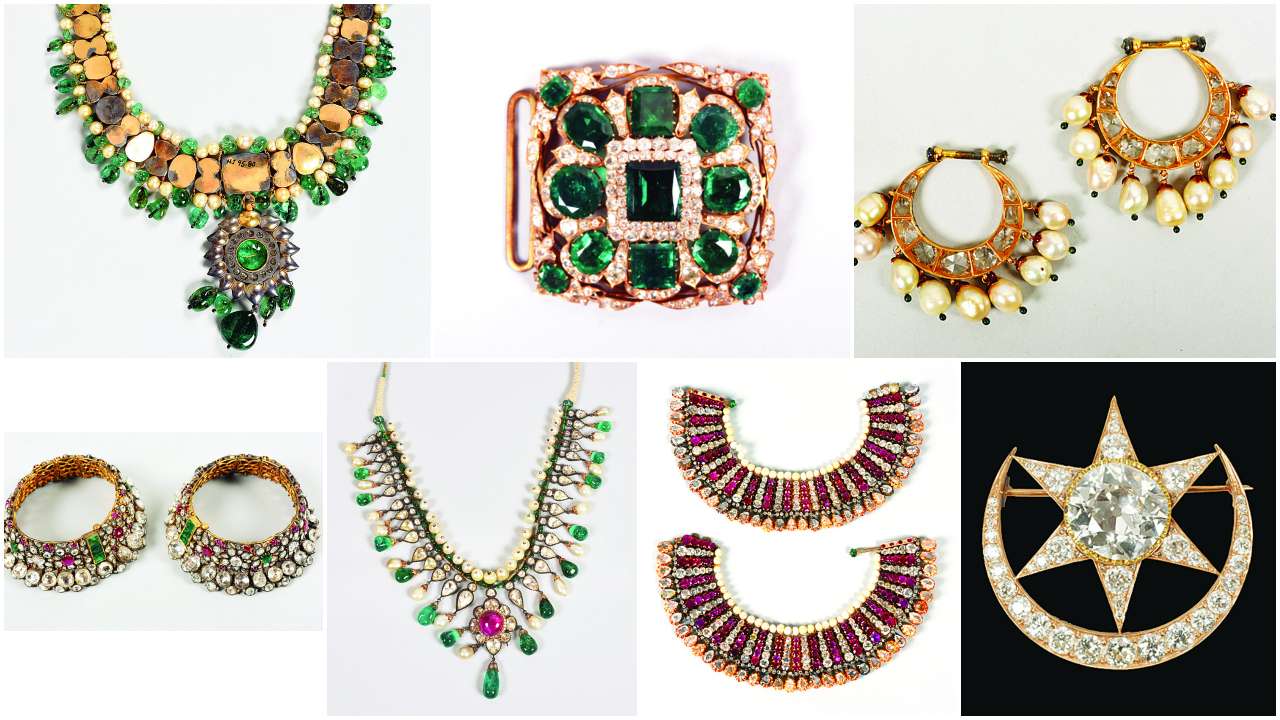
Jaw-dropping – that’s the only way to describe the selection of the Nizam’s jewels currently on show at the National Museum in Delhi. Here are necklaces and sarpeches (turban ornaments), rings and buttons, armbands and anklets, belts and buckles, bracelets and bangles so thickly encrusted with diamonds and emeralds, mainly, but also with pearls, rubies and sapphires, including several that are as large as birds’ eggs, that it leaves one a little goggle eyed. Not to speak of the Jacob’s Diamond, at 184.5- carats, one of the largest diamonds in the world – the fabled Kohinoor, in contrast, is much smaller at 105.6 carats – which its royal owner had worn in his shoe and later used casually as a paperweight.
On show are 173 items that the Indian government had bought in 1995 from the trusts which the last Nizam, Osman Ali Khan, had set up before his death in 1967 to safeguard the jewels, which were, at one point, said to rival the British queen’s crown jewels in value and beauty. The government had paid, at the time, nearly Rs 218 crore for the hoard; it’s value now is beyond guessing. And while they aren’t really very old, dating back to the 18th and 19th centuries, they offer a glimpse of India’s fabulous royal riches which are so much a part of our heritage.
This is the third time the Nizam’s jewels have been put on display, 12 years after the last one in 2007; the first airing happened in 2001, not long after they were brought to Delhi from Mumbai, where they had languished in the lockers of HSBC bank for nearly 40 years. “There was a lot of public demand for it,” says Sanjib Kumar Singh, the curator of the National Museum, who has supervised its mounting. Indeed, looking at the number of people beating a path to the high-security vault-like room, complete with steel grille door, where the jewels are placed, who don’t mind paying the Rs 50 fee [in addition to the general Rs 20 entrance] and braving the strict frisking – one would have to agree.
Some of the highlights of the collection include a saat lada (seven stringed) necklace made of over 400 lustrous Basra pearls; a pair of emerald-set armbands that are said to have once belonged to Tipu Sultan; a collection of 22 unset emeralds to once belonged to Czar Nicholas of Russia; and a belt with 306 diamonds weighing a total of 430 carats. How did the Nizams come to acquire such a priceless hoard? “After the decline of the Mughals, the Nizams became the most prominent rulers in India. As a result, jewellers from all over who had been patronised by the court in Delhi, flocked to Hyderabad,” says Singh. This is evident from the exquisite enamelling – minakari – on the reverse of many of the ornaments.
While the jewels themselves trace their geographic origins to places far and near – Burma, South Africa, Colombia, Iraq, Russia – scholars say that most of jewels were made in India, and are Indian in their design idiom. The Nizams, they say, were unlike other Indian royal families from Gwalior, Baroda and Kapurthala, in that they did not much patronise European jewellery houses such as Cartier, Boucheron and Van Cleef & Arpels. No wonder, then, that the show is called Jewels of India.
Jewels of India: The Nizam’s Jewellery Collection will be on view till May 5